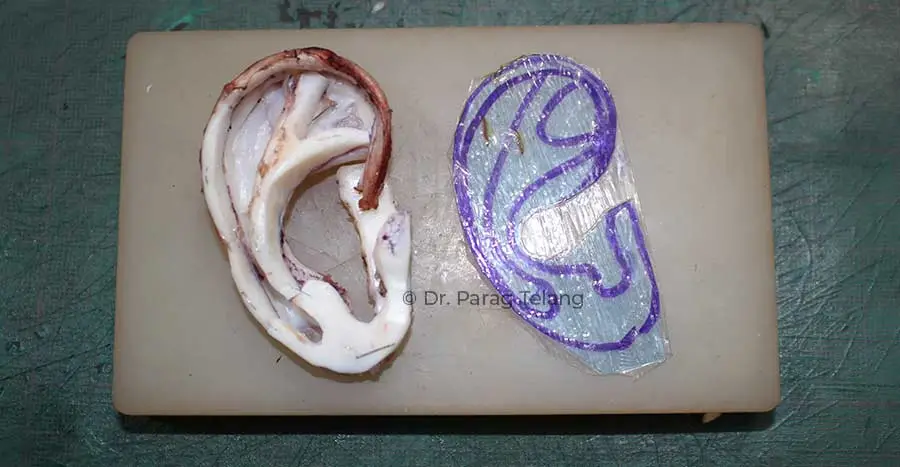Ear Reconstruction Surgery With Patient's Own Rib Cartilage: The Safest Method!

Microtia is an ear deformity that can range from mild structural problems to a completely missing ear. The deformity can affect one ear or both ears. If the microtia is congenital, it usually develops in the first trimester of pregnancy. The conditions affect the right ear more often than the left.
The symptoms of microtia include:
- Abnormally formed outer ear.
- Missing outer area.
- Smaller ear than normal ear size.
Treatment options for Microtia
1. Ear prosthesis
The ear prosthesis is made to make a mould of a child's ear which is used as a template. There are two ways to secure the ear prosthesis.
-
Adhesive retained prostheses: Special glue is used to attach the prosthetic ear, and no surgery is needed.
-
Implant retained prosthesis: Surgery is required to remove the small ear, and then titanium implants are placed with magnets and clips.
2. Surgical reconstruction
In this method, the surgeon creates a new ear with the help of rib cartilage. This is also called "autologous" reconstruction. Two surgeries are needed, and the child requires anaesthesia for the surgery.
-
First surgery: The surgeon makes an incision on the patient’s chest to take out cartilage from several ribs. The cartilage is cropped into three pieces. The rib cartilage is sculpted and wired with fine stainless steel. A skin pocket is created at the site of the ear by reshaping the available tissue. This is done to impersonate the ear skin, and to construct a detailed ear structure, carved to create an ear framework. This framework is buried beneath the scalp. With the help of gentle suction, the designed ear structure comes together.
-
Second surgery: The new ear is lifted from the side of the patient's head to put it into a proper position so that it looks like a normal ear sticking out of the head. A flap of tissue is added, and skin grafting is done over the exposed cartilage. This surgery may take around 3-4 hours.
Advantage of ear construction using rib cartilage
1. Reconstruction of the ear through the rib cartilage method delivers natural-looking results. Whereas prosthetics are mainly made out of silicone, which changes colour throughout the year. Thus, the prosthetics always seem artificial.
2. Prosthetics need to be repeatedly removed or replaced which may cause breakage. Children and adults may lose the device while getting engaged in rigorous physical activities. Ear reconstruction surgery gives permanent results. There are no such complications in reconstruction with rib cartilage. The surgeon might recommend wearing protective helmets while performing physical activities for some time.
3. A prosthetic might require frequent care and periodic replacement. However, after an ear reconstruction surgery, no such periodic visits to the surgeon are required.
4. Ear reconstruction with the help of rib cartilage is the best option for growing children. Cartilage is rich in growth factors. After the surgery, the body supplies nutrients to the ear just like other body parts, and the newly reconstructed ear functions as a typical ear. The size of the ear grows with age. On the other hand, body tends to reject the prosthesis, and it might lead to infections.
Dr. Parag Telang is a board-certified and an expert plastic surgeon for cosmetic ear reconstruction surgery in India. He is one of the very few plastic surgeons to perform ear reconstruction using rib cartilage.

Author
MBBS, MS - General Surgery, MCh - Plastic & Reconstructive Surgery, DAFPRS Fellowship in Aesthetic Surgery